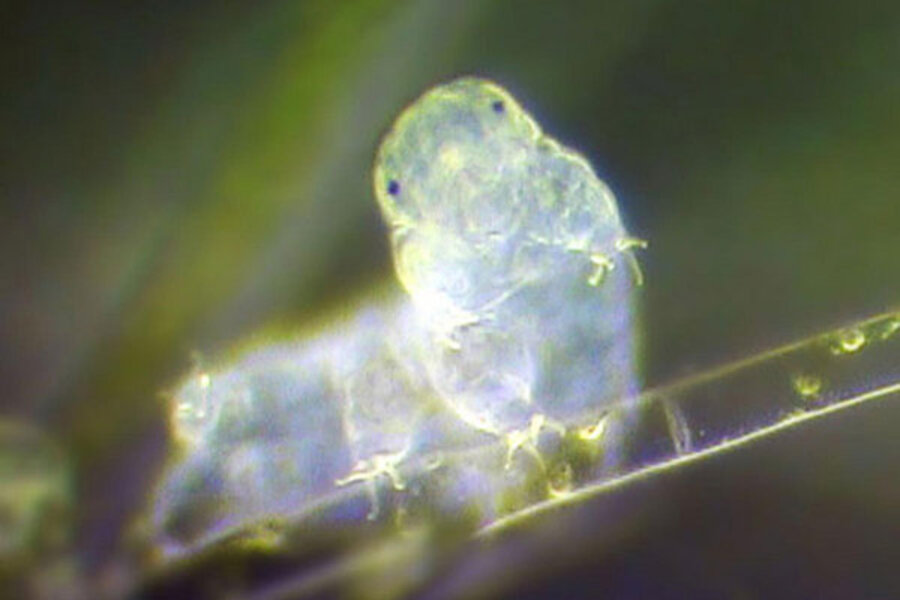Scientists reveal secret of this amazingly durable micro-critter
Loading...
What’s the secret behind the tardigrade’s characteristic pluck? Protein-coated DNA.
Tardigrades, also known as “water bears” or “moss piglets,” are renowned for their Herculean durability. Boiling water, subzero temperatures, even the vacuum of space – you name it, and these aquatic micro-animals can survive it. But until now, scientists weren’t exactly sure how that was possible.
On Tuesday, researchers published a comprehensive genome sequence of one tardigrade species, Ramazzottius varieornatus, in the journal Nature Communications. Their work revealed the existence of a strange protective protein, Dsup, which appears to shield DNA from radiation damage.
When it comes to tardigrade resilience, there’s a long history of head scratching in the scientific community. For one thing, these tiny creatures can withstand extreme temperatures – from almost 100 degrees Celsius to nearly absolute zero. If you freeze one, then thaw it a decade later, it will wake up good as new. Tardigrades can even walk away from radiation doses expected be fatal to other animals.
How? Just thank the protein Dsup, which is shorthand for “damage suppressor.” Researchers theorize that the mysterious protein wraps itself gently around tardigrade DNA, protecting it from harm without interrupting its function. This protein shield even works on other animals – when scientists injected the protein into human cells, they experienced 40 percent less X-ray damage.
“We guess that Dsup binds densely to DNA to provide a shield against environmental stress, somehow making DNA inaccessible to any damaging agents,” lead author Takekazu Kunieda, a biologist at the University of Tokyo, told New Scientist. “To our knowledge, this is the first identification of a DNA-associating protein which confers DNA protection and improved tolerance to radioactivity in animal cells.”
In 2015, researchers from the University of North Carolina produced a very different explanation.
Their experiments showed that 17.5 percent of tardigrade DNA came from other species. Bob Goldstein, a co-author of the study, suggested that foreign DNA, obtained through horizontal gene transfer, gave the water bears their signature toughness. The finding was highly controversial, and the group eventually acknowledged that contamination likely factored into its results.
The genome assembled by Dr. Kunieda and colleagues suggests that tardigrades probably only harbor about 1 percent foreign DNA, which is fairly normal in the animal world. But even though new research may put an end to the gene transfer theory, Dr. Goldstein acknowledges the significance of the new find.
“They survive a lot of different kinds of extremes,” Goldstein told the Washington Post. “So there are probably a lot of kinds of protectants. It’s an exciting finding, and I expect we’ll find a lot more proteins like this.”






